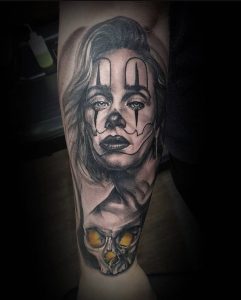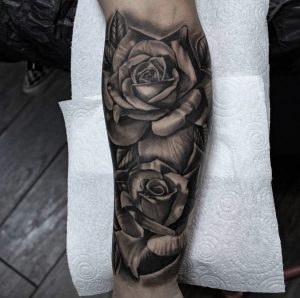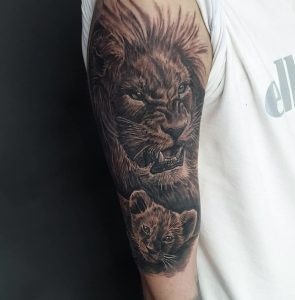Black and Grey
We are pivoting back to techniques this week, taking a closer look at the beloved by many Black and Grey. This post contemplates the history of the style and looks at how the subtleties that create some incredible tattoo magic are achieved through sophisticated techniques, generating awe-inspiring depth and detail.
Evolved out of joint-style tattoos
Black and grey has evolved out of the underground and hidden culture of prison tattooing. It even used to be referred to as ‘joint-style.’ Inmates would tattoo on each other. They would use homemade single needles made from guitar strings, and tape recorder parts to power the machines. The ink would come from ballpoint pens or cigarette ashes and soot, diluted with water to create nuance.
Born out of necessity in penal facilities, it has grown to become one of the most sought-after techniques in the world, with top black-and-grey artists being booked out somewhere close to forever and have people travel from all over the world to get inked by them.

East LA Chicano roots
Black and grey has strong roots in Chicano culture, meaning that of American-born Mexicans. Outside of the prisons, they became popularised in East Los Angeles in the late 1970s. Specifically through a tattoo studio called Good Time Charlie’s Tattooland. The primarily Mexican-American customers wanted tattoos in “la pinta” (prison) style, meaning single needle and black and grey shading.
They would draw inspiration from the pencil drawings that would adorn envelopes sent to them with letters from relatives or friends who were locked up. The artists at the studio, in adapting to the requests, basically introduced the first new style since electric tattooing began.
Ranges of shading in different styles

An artist that has worked extensively in black and grey will have an exquisite range of shading and are able to achieve soft and subtle shades right along with darker black. The ink needs to be diluted the right amount to achieve the tone the artist wants. Mixing in white with black ink is also a common way of achieving grey tones.
Most often when thinking about black and grey, your mind goes to realism, characterised perhaps by pop-culture, animals, landscapes and portraits. The competition between artists in this fields has pushed the technique further and further, with many tattooists achieving incredibly life-like imagery and depth. Sometimes the art even looks like a jaw-dropping 3D relief on the skin.
However, black and grey can be applied to several other styles, with stunning results. Removing the colour from American traditional tattoos, for example, gives them a grittier, more sombre feel. Seeing a full Japanese-style back tattoo in a myriad of greys is as impressive as anything.

Fourteen shades of grey
The human eye can distinguish fourteen (not fifty) shades of grey. White is the absence of grey, whereas black is the saturation of it. Some artists say that to achieve a truly spectacular result when shading, a tattoo should make use of all fourteen shades. But the depths of the shading can not be achieved by pressing down harder on the skin as you would with a pencil on paper, but rather by going over the area many times. Thanks for that…
